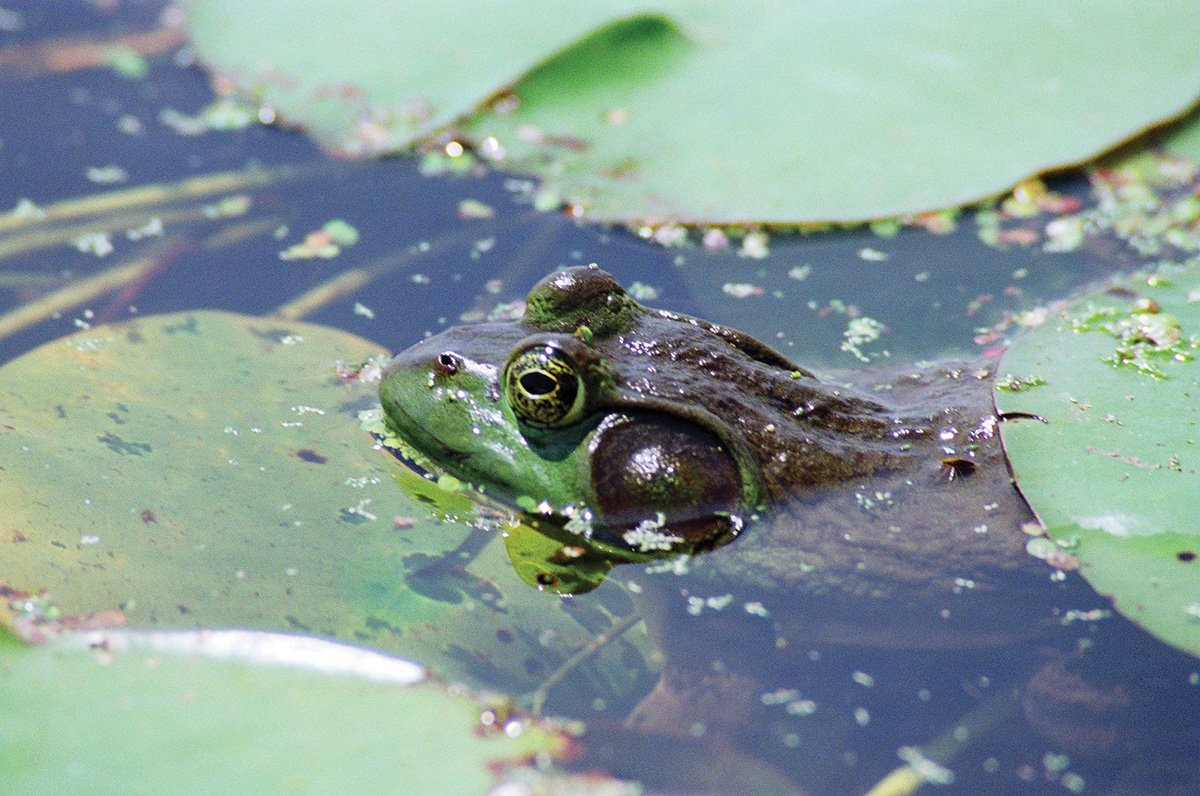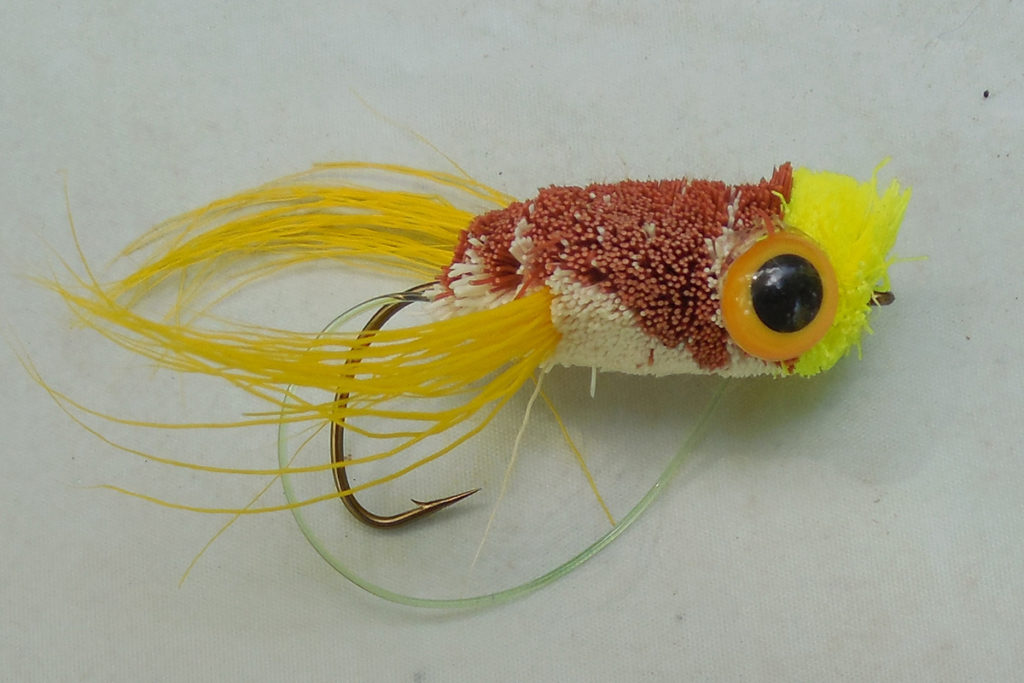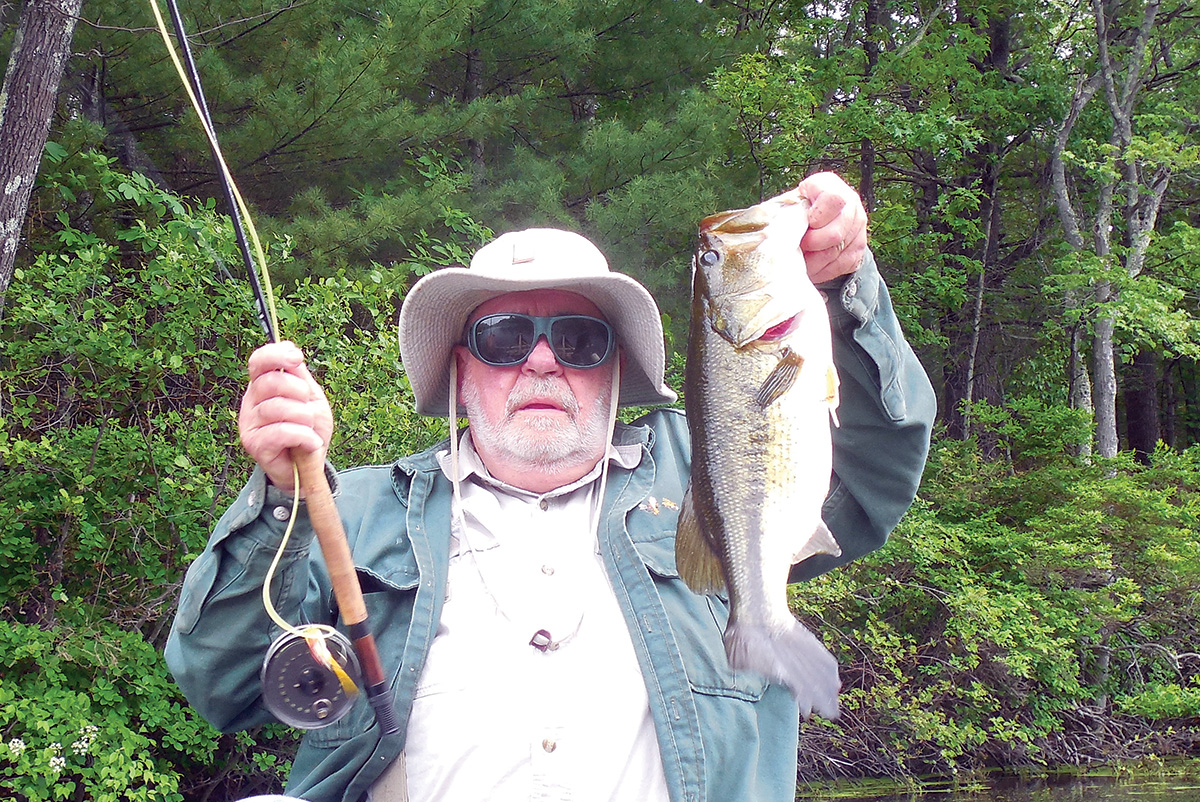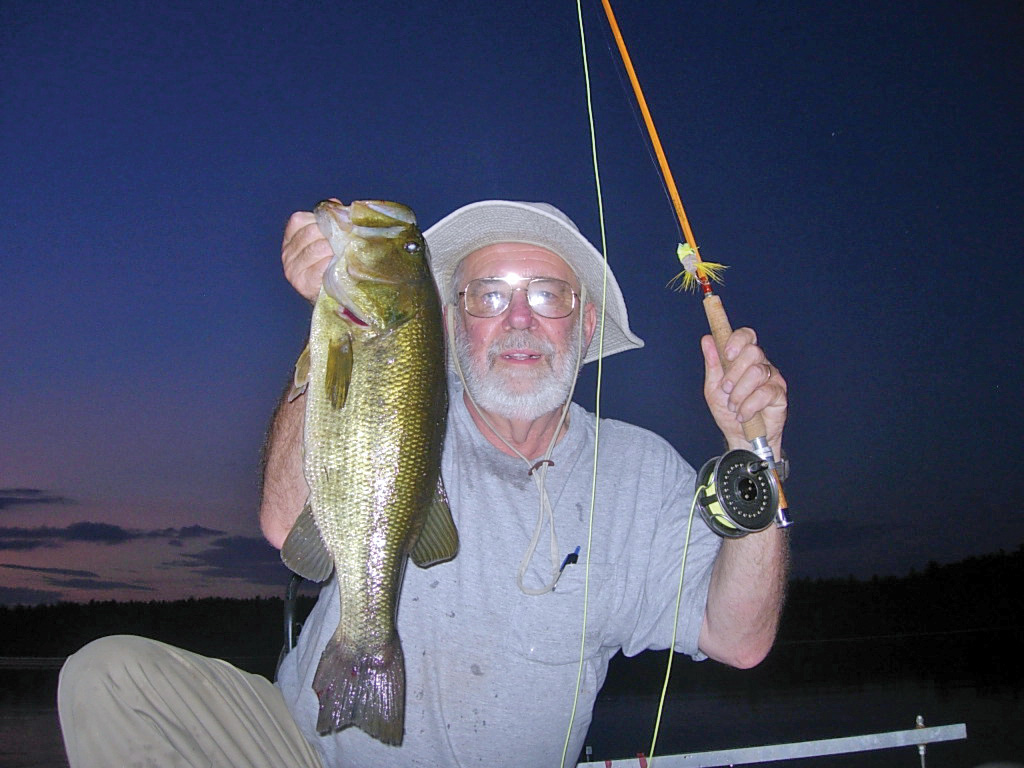
A 60-year-old secret
In March of 1955, after completing my paper route duties for the day, I rode my bike to Russ Gold Sporting Goods located on South Main Street in Fall River, MA. I walked in and asked for a 5/8-ounce Arbogast frog-colored Jitterbug. I excitedly told Russ, the owner, that it was my first lure and I was purchasing it with my own money that I had earned. He told me that I also needed a U20 Helin Flatfish and a Daredevil Imp lure to round out my bass arsenal. When I told him I just had enough money to buy the one Jitterbug he told me to take the other two lures, “on the house,” to ensure a good start to my fishing career. I graciously accepted the lures and couldn’t wait to hit the water.
Fishing the Jitterbug, I was always amazed at the surface strikes. Whether the bass crashed the lure on the surface, flew out of the water to hit it or just simply sucked it in from down below, it was always exciting.

You might say that even all these years later that I never grew up as I live for surface strikes and still find them as exciting today as I did all those years ago.
My dad and I were frequent readers of the Field & Stream fishing contests, especially for largemouth bass. I fished hard but I couldn’t get a big bass—a big bass for me was a 5-pounder. I got a lot of small bass including some smallmouth bass from South Watuppa Pond in Fall River. As a young angler with a wide imagination I would think about what I could do to someday get one of those really big largemouth bass that I just knew lived in my local waters.
I listened to all the arguments of using dark lures verses light lures at night, but I quickly came to the realization that the underside of frogs do not change color based on the time on the clock. If it’s white or yellow, that’s the color regardless of the time of day. So I stayed with the white belly Jitterbug, even though the frogs had a yellow belly, and did just fine.
A thought came into my head one day: frogs like to sing at night but they don’t move or swim very much. The ribbit sound is like music to a bass fisherman, and I bet bass can hear frogs singing as well. For an 11-year-old kid it made total sense to me, so I set out test my theory.
Armed with a baitcasting rod and a Jitterbug, I would listen for the sound of a frog, try to get to that spot and cast my lure in its general direction. I would let the ripples die down, then with a twitching motion of the rod tip I would crawl the lure for about 2 feet, pause and then repeat the process. The first night using this new theory of mine I got my big bass, a 5-pound, 2-ounce largemouth to be exact! That was the real start of my fishing career. To this day I still listen to frogs and fish hard in these areas, and I have never been disappointed. I never grew up; I still think bass listen to frogs singing and so do I!
Many years later I have moved on from the old baitcasting set-up and fish mostly with a fly rod these days, but in windy conditions I use a plug or spin casting rod. My perfect rod is a glass, bamboo or graphite rod, 8-1/2 feet long that handles an 8-weight line. I fish a 9-weight regular forward taper line, with a 6-foot straight level line of 20- or 25-pound test when necessary. The most important thing is the construction of the bug, and here is how I make it.

Tie One Up
I make my bugs weedless by using a single strand of 50-pound mono as a weed guard. The bug body is made of clipped deer body hair (hollow) for buoyancy and profile. I add two legs of sparse deer hair, and the overall construction is streamlined to aid in the ease of casting the fly.
I recommend using a Pat Cohen, Fugly packer available at your local quality fly shop. They are great for making tightly-packed bugs and result in a much better end product. Begin by placing the hook in your vice and tie in the thread on the shank at a position roughly in line with point of hook.
Next, tie in a piece of 50-pound mono and secure it with Zap ZF-13 brush-on adhesive. Wrap two loose loops around a 1/4-inch bunch of white deer body hair and hook shank and pull firmly (but not too tight). The hair will flair out. Rotate the white to bottom side of hook.
Wrap two loose loops around a 1/4-inch bunch of brown deer body hair and hook shank, and place it over the white hair; pull firmly keeping brown over white hair. Repeat the first two steps with three bunches, pack the hair with the Fugly Packer, and then trim with scissors or razor blade.
Now tie in on each side of the hook a length of yellow deer body hair legs. Repeat the first two steps roughly to a point about 1/4-inch from the eye of hook, and trim the hair with razor or scissors.
Bring the mono with a bend below the point of hook to a spot about 1/4-inch from the hook eye, secure the mono with brush-on Zap, and let it dry. Add several bunches of chartreuse deer body hair and form the body shape of a frog, leaving a flat face or “popper” to the front of the body. Finish the frog with a pair of 3D eyes secured with Goop, add water and go fishing!

| Material List |
|---|
| Hook: Daiichi Model 2720 or similar, size 3/0 bronze Thread: UTC G.S.P. 75 or 100 denier color optional Weed guard: Ande 50-pound test monofilament Body: White, Brown, Chartreuse and yellow deer body hair Eyes: 3D yellow, black pupil, 5mm size |



